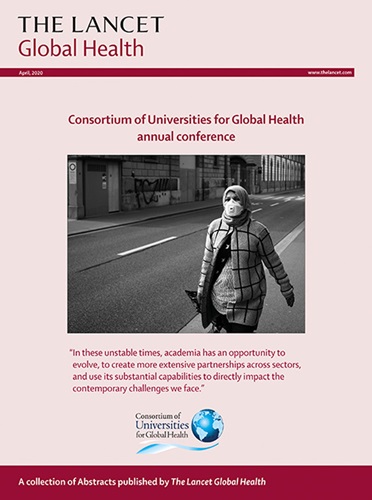Causes, associated exposures, and outcomes of cirrhosis and hepatocellular carcinoma in Malawi: an observational cohort and case-control study.
IF 19.9
1区 医学
Q1 PUBLIC, ENVIRONMENTAL & OCCUPATIONAL HEALTH
引用次数: 0
Abstract
BACKGROUND African countries have the highest age-standardised mortality from liver disease. We studied patients with cirrhosis and hepatocellular carcinoma in Malawi to ascertain the causes, associated exposures, and outcomes after discharge, and identify opportunities for intervention strategies. METHODS In this case-control cohort study, we recruited patients aged 16 years or older who met the study definitions for cirrhosis or hepatocellular carcinoma from the Queen Elizabeth Central Hospital in Blantyre, Malawi. In the cirrhosis group, we excluded patients with a liver stiffness greater than 12 kPa if a cause of potential false elevation of liver stiffness was identified and a liver ultrasound did not show signs of cirrhosis; people with extrapulmonary tuberculosis or other non-hepatic causes of ascites; and pregnant people. In the hepatocellular carcinoma group, we excluded those with an extrahepatic malignancy or ultrasound features consistent with liver metastases, pregnant people, and indeterminate lesions as determined by consultant radiologists on serial ultrasounds. Research nurses identified potential participants on medical and surgical wards, the medical outpatient clinic, and endoscopy unit, using systematic case notes review and clinician referral during weekdays. Patients were followed up for 6 months. A community sample was recruited from the catchment area of the hospital to estimate the general population prevalence of diseases and exposures potentially associated with liver disease. For hepatitis B and C, we conducted a serological survey in individuals aged 16 years or older who were randomly selected from a census, and we randomly selected a proportion of individuals who were HBsAg positive or HBsAg negative to estimate the general population prevalence of HIV, alcohol, smoking, diabetes, hepatitis D and E, and autoimmune hepatitis serological markers. We estimated population attributable fractions (PAFs) for cirrhosis and hepatocellular carcinoma using community controls and the serological survey. PAFs were estimated from logistic regression models adjusted for age and sex, using the Bruzzi method with percentile bootstrap confidence intervals. FINDINGS Between Nov 1, 2017, and April 30, 2019, we prospectively screened 708 patients and enrolled 138 diagnosed with cirrhosis and 78 diagnosed with hepatocellular carcinoma. Patients had a median age of 40 years (IQR 35-51), 134 (62%) were male, and 82 (38%) were female. In those with hepatocellular carcinoma, median tumour size was 13·2cm (10·2-17·3) and median survival was 40 days (95% CI 30-51). The community sample comprised 3258 individuals with hepatitis B and 1661 with hepatitis C identified from the serological survey, and 120 individuals negative for HBsAg and 94 people who were HBsAg positive from the serological survey to estimate the general population prevalence of HIV, alcohol, smoking, diabetes, hepatitis D and E, and autoimmune hepatitis serological markers. At 6 months, 83 (60%) of 130 patients with cirrhosis and six (8%) of 78 patients with hepatocellular carcinoma were still alive. Hepatitis B was the main attributable cause of cirrhosis (PAF 25·3% [17·5-33·3]) and hepatocellular carcinoma (73·1% [62·6-82·9]). HIV was the second leading attributable exposure associated with cirrhosis (22·2% [12·2-32·2]) and hepatocellular carcinoma (18·0% [4·8-30·9]); the association persisted after adjusting for hepatitis B virus co-infection. For hepatocellular carcinoma (but not cirrhosis), smoking (23·6% [8·9 to 37·2]) and alcohol (14·5 [-0·2 to 28·4]) were secondary attributable exposures. Autoimmune hepatitis (five [4%] patients), primary biliary cholangitis (four [3%] patients), and hepatitis C (two [1%] patients) were uncommon causes of cirrhosis, and no patients in either group had hepatitis D or E viraemia. INTERPRETATION Hepatitis B is the leading cause of cirrhosis and hepatocellular carcinoma in Malawi. HIV was diagnosed at a much higher rate among patients with cirrhosis and hepatocellular carcinoma than community controls; it is uncertain whether the relationship is causal or influenced by confounding. Alcohol and smoking are modifiable exposures associated with hepatocellular carcinoma. Hepatocellular carcinoma and cirrhosis are diagnosed at an advanced stage, with a poor prognosis. Community screen-and-treat programmes for hepatitis B could substantially reduce liver-related mortality in this region. FUNDING Wellcome Trust, Bill and Melinda Gates Foundation, and German Federal Ministry of Economic Cooperation and Development.马拉维肝硬化和肝细胞癌的病因、相关暴露和结局:一项观察性队列和病例对照研究
背景:非洲国家的肝脏疾病年龄标准化死亡率最高。我们研究了马拉维的肝硬化和肝细胞癌患者,以确定病因、相关暴露和出院后的结果,并确定干预策略的机会。方法在这项病例对照队列研究中,我们从马拉维布兰太尔伊丽莎白女王中心医院招募年龄在16岁及以上、符合肝硬化或肝细胞癌研究定义的患者。在肝硬化组中,我们排除了肝硬度大于12kpa的患者,如果确定了肝硬度潜在虚假升高的原因,并且肝脏超声没有显示肝硬化的迹象;患有肺外结核或其他非肝脏原因引起的腹水者;还有孕妇。在肝细胞癌组中,我们排除了肝外恶性肿瘤或与肝转移相一致的超声特征,孕妇,以及咨询放射科医生通过一系列超声检查确定的不确定病变。研究护士在内科和外科病房、内科门诊和内窥镜检查部门通过系统的病例记录审查和临床医生推荐,在工作日确定潜在的参与者。随访6个月。从医院的集水区招募了一个社区样本,以估计一般人群的疾病患病率和可能与肝病相关的暴露。对于乙型和丙型肝炎,我们对从人口普查中随机选择的16岁或以上的个体进行了血清学调查,我们随机选择了一部分HBsAg阳性或HBsAg阴性的个体,以估计艾滋病毒、酒精、吸烟、糖尿病、丁型和戊型肝炎以及自身免疫性肝炎血清学标志物的一般人群患病率。我们通过社区对照和血清学调查估计肝硬化和肝细胞癌的人群归因分数(PAFs)。paf通过调整年龄和性别的逻辑回归模型进行估计,使用具有百分位数bootstrap置信区间的Bruzzi方法。在2017年11月1日至2019年4月30日期间,我们前瞻性筛选了708例患者,其中138例诊断为肝硬化,78例诊断为肝细胞癌。患者中位年龄为40岁(IQR 35-51),男性134例(62%),女性82例(38%)。在肝细胞癌患者中,中位肿瘤大小为13.2 cm(10.2 - 17.3),中位生存期为40天(95% CI 30-51)。社区样本包括血清学调查中发现的3258名乙型肝炎患者和1661名丙型肝炎患者,血清学调查中发现的120名HBsAg阴性患者和94名HBsAg阳性患者,以估计艾滋病毒、酒精、吸烟、糖尿病、丁型和戊型肝炎以及自身免疫性肝炎血清学标志物的一般人群患病率。6个月时,130例肝硬化患者中有83例(60%)存活,78例肝细胞癌患者中有6例(8%)存活。乙型肝炎是肝硬化(PAF 25.3%[17.5 ~ 33.3])和肝细胞癌(73.1%[62.6 ~ 82.9])的主要病因。HIV是与肝硬化(22.2%[12.2 - 32.2])和肝细胞癌(18.0%[4.8 - 30.9])相关的第二大可归因暴露;在调整乙肝病毒合并感染后,这种关联仍然存在。对于肝细胞癌(但不包括肝硬化),吸烟(23.6%[8.9至37.2])和酒精(14.5%[- 0.2至28.4])是继发性可归因暴露。自身免疫性肝炎(5例[4%])、原发性胆管炎(4例[3%])和丙型肝炎(2例[1%])是不常见的肝硬化原因,两组均无患者出现丁型肝炎或戊型肝炎病毒血症。乙肝是马拉维肝硬化和肝细胞癌的主要病因。肝硬化和肝细胞癌患者的HIV诊断率远高于社区对照组;尚不确定这种关系是因果关系还是受混杂因素的影响。酒精和吸烟是与肝细胞癌相关的可改变的暴露。肝细胞癌和肝硬化在晚期诊断,预后较差。社区乙型肝炎筛查和治疗规划可大大降低该地区与肝脏相关的死亡率。资助:威康信托基金、比尔及梅琳达·盖茨基金会、德国联邦经济合作与发展部。
本文章由计算机程序翻译,如有差异,请以英文原文为准。
求助全文
约1分钟内获得全文
求助全文
来源期刊

Lancet Global Health
PUBLIC, ENVIRONMENTAL & OCCUPATIONAL HEALTH-
CiteScore
44.10
自引率
1.20%
发文量
763
审稿时长
10 weeks
期刊介绍:
The Lancet Global Health is an online publication that releases monthly open access (subscription-free) issues.Each issue includes original research, commentary, and correspondence.In addition to this, the publication also provides regular blog posts.
The main focus of The Lancet Global Health is on disadvantaged populations, which can include both entire economic regions and marginalized groups within prosperous nations.The publication prefers to cover topics related to reproductive, maternal, neonatal, child, and adolescent health; infectious diseases (including neglected tropical diseases); non-communicable diseases; mental health; the global health workforce; health systems; surgery; and health policy.
 求助内容:
求助内容: 应助结果提醒方式:
应助结果提醒方式:


